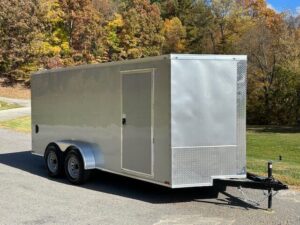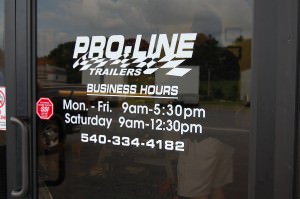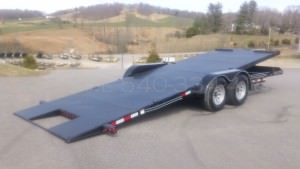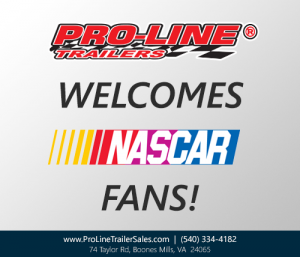Weight, Safety, and Speed: How to Drive With a Trailer for the First Time
It’s astounding that the global trailer industry is worth over $20 billion.
Driving with a trailer for the first time can be both exciting and daunting. Whether you’re towing a camper, boat, or utility trailer, understanding the fundamentals of trailer safety, weight distribution, and speed is crucial.
Do you want to learn how to drive with a trailer? Read on for the most useful trailer tricks.
Trailer Safety: Your Top Priority
Before hitting the road with a trailer in tow, prioritize safety. Begin with the following:
- Familiarizing yourself with local towing regulations
- Ensuring your vehicle is rated for towing
- Obtaining the necessary licenses, if required
Ensure your trailer is registered and equipped with functioning lights. This should include brake lights and turn signals. Always adhere to speed limits and avoid sudden maneuvers while towing.
Trailer Brakes: Understanding the Basics
Trailer brakes play a crucial role in ensuring a safe towing experience. Many trailers come with their own braking systems, either electric or surge brakes.
A controller inside the tow vehicle activates electric brakes. Surge brakes engage when the trailer pushes against the tow vehicle during deceleration.
If your trailer has electric brakes, it’s essential to install a brake controller in your tow vehicle. Adjust the brake settings according to the weight of your load, ensuring smooth and controlled stops.
Inspect the trailer’s brake system often. Check for deterioration, and look after any issues right away. Understanding how your trailer brakes work and maintaining them enhances safety during towing.
Trailer Inspection: A Pre-Journey Ritual
Before embarking on a journey with a trailer, it’s wise to do a full inspection to see if anything needs to be addressed.
Start by examining the trailer hitch. Ensure it’s attached to the tow vehicle in a secure way. Verify that the safety chains are properly connected and have sufficient slack to allow turns without binding.
Take a look at the tires to confirm that they’re inflated and don’t have any signs of damage. Check the trailer lights to ensure they’re operational. Inspect the trailer wiring for any exposed or damaged areas.
Examine the trailer’s suspension system. This should include the springs and shocks. See if anything looks worn down.
Inside the trailer, secure all items to prevent shifting during transit. Distribute the weight in an even way to maintain stability and control while towing. A maintained and balanced trailer reduces the risk of accidents and ensures a smoother ride.
Trailer Weight: Striking the Right Balance
Understanding trailer weight is crucial for safe towing. Every trailer has a maximum weight capacity specified by the manufacturer. Exceeding this limit can lead to the following:
- Instability
- Reduced braking efficiency
- Increased wear on your vehicle
Consider both the gross trailer weight (GTW) and tongue weight when loading your trailer. Aim for a tongue weight that falls within the recommended range for your trailer to maintain proper balance and control.
When loading cargo onto the trailer, place heavier items over the axle to distribute weight in an even way. Avoid overloading the trailer and check the weight distribution often during long journeys.
Buying a Trailer: Tips for First-Time Buyers
If you’re in the market for a trailer, whether it’s for recreational use or hauling, you can’t rush into the purchase. Consider the following trailer tips to make a great purchase:
Understanding Your Towing Capacity
Before venturing into the world of trailer ownership, it’s crucial to understand your vehicle’s towing capacity. Exceeding this limit can lead to the following:
- Performance issues
- Increased wear on your vehicle
- Safety hazards
Knowing your towing capacity will guide you in selecting a trailer that aligns with your vehicle’s capabilities.
Choosing the Right Type of Trailer
Trailers come in various types, each designed for specific purposes. Consider the size, weight, and intended use of the trailer before making a purchase.
Utility trailers are great for all kinds of things like transporting goods. Travel trailers are ideal for camping and road trips. Boat trailers cater to watercraft transportation.
A utility trailer might be suitable for hauling materials, but for camping adventures, a travel trailer equipped with living amenities would be more appropriate. Tailoring your trailer choice to your needs ensures a seamless and enjoyable towing experience.
Inspecting Trailer Features
Thoroughly inspecting the features of a trailer is a vital step in the buying process. Pay close attention to the frame, checking for signs of the following:
- Rust
- Corrosion
- Structural damage
Inspect the tires for proper inflation and look for any visible wear or damage. Functional lights, including brake lights and turn signals, are essential for safety, so ensure they are operational. Examine the trailer’s braking system, whether it’s electric or surge brakes, and check for any issues.
You also need to confirm that the trailer has features for your safety, like reflective tape and proper signage. A full inspection ensures that the trailer is in good condition and ready for the road.
Asking About Maintenance History
If you’re considering a used trailer, inquire about its maintenance history. Ask the seller for records of past maintenance, including the following:
- Brake inspections
- Tire replacements
- Any repairs
A maintained trailer is more likely to provide a reliable towing experience and reduce the risk of breakdowns on the road. If the seller can’t provide maintenance records, it might be a red flag, and extra scrutiny is warranted.
Considering Trailer Accessories
Enhance your towing experience by investing in suitable accessories for your trailer. While these accessories may add to the initial cost, they contribute to the safety and performance of your towing setup. Consider your towing needs and the conditions you may encounter to determine which accessories are essential for your setup.
Sway control systems help prevent swaying or fishtailing. Weight distribution hitches help distribute the trailer’s weight to improve stability and control. Tire pressure monitoring systems alert you to any issues with your trailer’s tires, reducing the risk of blowouts.
Now You Know How to Drive With a Trailer
By following these tips on how to drive with a trailer, first-time trailer drivers can embark on their journeys with confidence. Always prioritize safety, conduct thorough inspections, and ensure you maintain your trailer for a smooth and secure towing experience.
You deserve the greatest trailer for your unique needs. Contact Pro-Line Trailers so we can help you find your ideal match. We offer a full line of enclosed trailers, open trailers, motorcycle trailers, and so much more.





